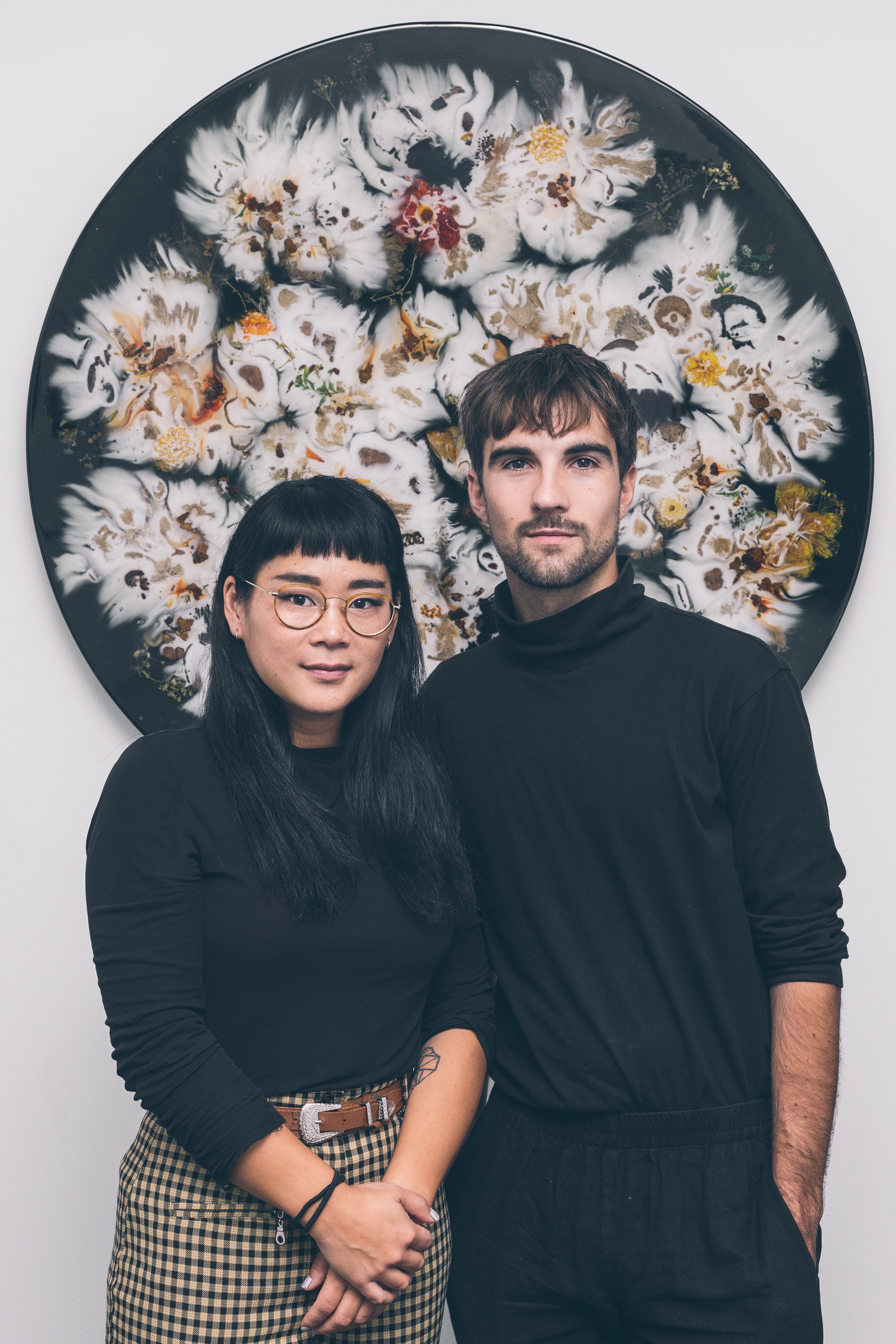 During their residency, Rhoda and Mikkel worked with Ocean floor sediment from extreme environments, predominately in collaboration with Professor Giuliana Panieri and other scientists from the Department of Geosciences at the Arctic University of Norway. These researchers are experts on methane and hydrothermal vents in the Arctic, where microbes, foraminifera, corals and other life are evolving in seemingly toxic environments. They dried the sediment into a powder and fold it into molten glass at 1200 degrees. The organic matter in the sediment reacts in this new extreme environment, creating gasses, bubbles and colours that resemble carbon dioxide trapped in the top layers of ice cores and minerals. These glass cores become a form of registration and archive of organic and geological matter variation from different sediment samples, making visible life that existed over time. With this artistic residency, they have created glass cores from sediment samples to research the diversity of organic matter and mineral content with varying locations, seasons, depths and ecosystems. The glass cores were lit up and assembled in metal structures inspired by ice core bores. These cores have been exhibited in different constellations, such as at their solo exhibition at the Museum of Modern Glass, where the glass cores were situated in an installation and video footage of ice core bores and ROV footage from relevant expeditions was shown to give audiences a feeling of Oceanic deep time and scientific research.
During their residency, Rhoda and Mikkel worked with Ocean floor sediment from extreme environments, predominately in collaboration with Professor Giuliana Panieri and other scientists from the Department of Geosciences at the Arctic University of Norway. These researchers are experts on methane and hydrothermal vents in the Arctic, where microbes, foraminifera, corals and other life are evolving in seemingly toxic environments. They dried the sediment into a powder and fold it into molten glass at 1200 degrees. The organic matter in the sediment reacts in this new extreme environment, creating gasses, bubbles and colours that resemble carbon dioxide trapped in the top layers of ice cores and minerals. These glass cores become a form of registration and archive of organic and geological matter variation from different sediment samples, making visible life that existed over time. With this artistic residency, they have created glass cores from sediment samples to research the diversity of organic matter and mineral content with varying locations, seasons, depths and ecosystems. The glass cores were lit up and assembled in metal structures inspired by ice core bores. These cores have been exhibited in different constellations, such as at their solo exhibition at the Museum of Modern Glass, where the glass cores were situated in an installation and video footage of ice core bores and ROV footage from relevant expeditions was shown to give audiences a feeling of Oceanic deep time and scientific research.
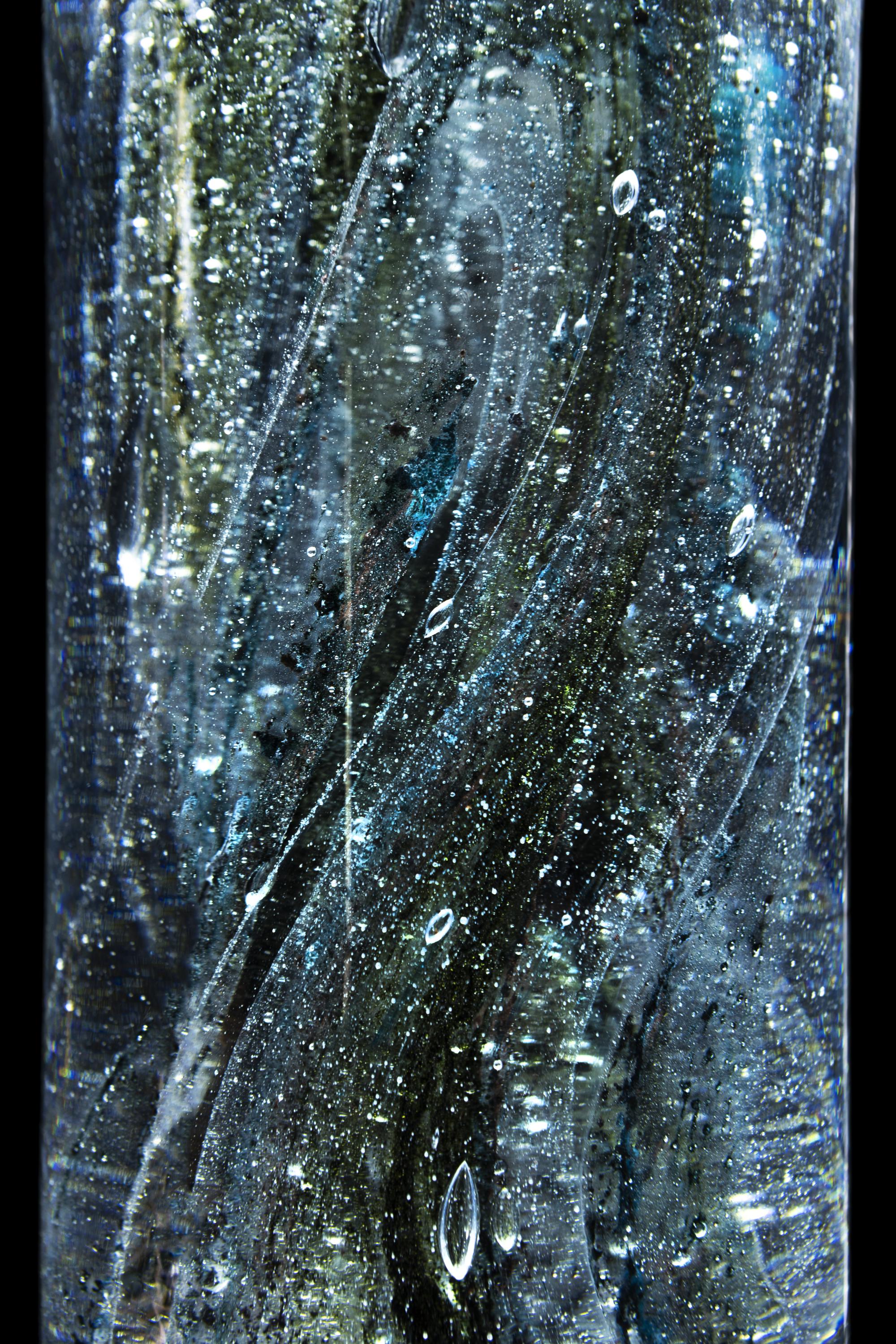
With this artistic research process, Studio ThinkingHad explored how glass cores can act as a tool for further scientific research into extreme environments, and to answer questions such as how oceanic conditions and climate change impact methane seepage from the seafloor and the impacts on ecosystem health. For example, by comparing the amount of bubbles in each glass core and the colours created by minerals, it is possible to see if there are any differences between the sediment samples' locations, seasons, and depth and try together with scientists to see what information can be identified both scientifically but also artistically through aesthetics, empathy and philosophy. Could analytical methods such as Raman Spectroscopy and Laser ablation be tested on the glass cores and compared to the original sediments to see what occurs under the extreme glass production environment at 1200 degrees - which minerals stay, what is lost, and what changes? In what other ways can new knowledge be extracted from these glass cores?
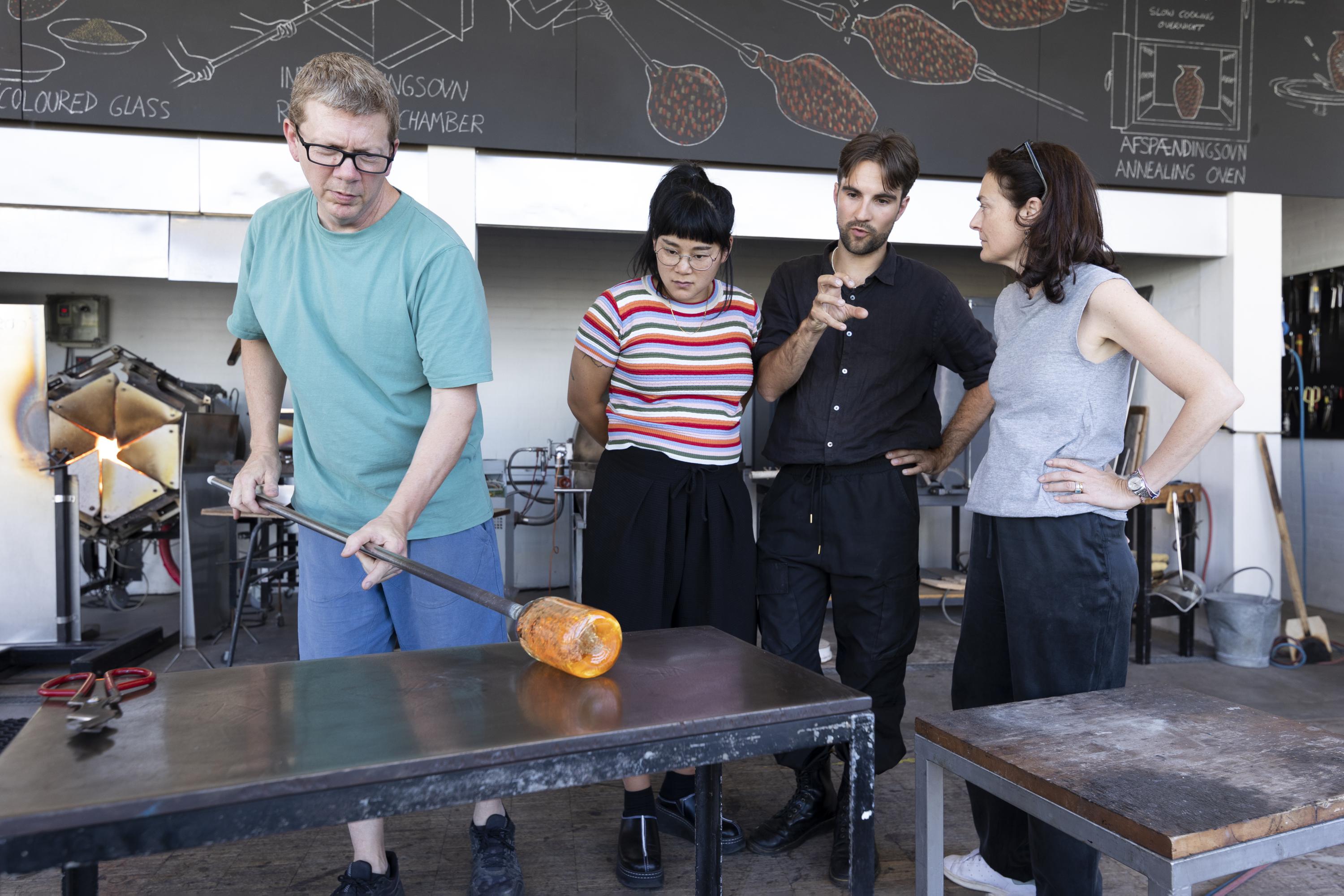 This co-creation collaboration seeks to connect audiences to life in extreme environments such as methane and hydrothermal ocean vents across deep time perspectives. Through this research and artwork, they create a possibility for audiences to empathise with the vibrancy of life in the Ocean that existed before our existence and continue to adapt and evolve and get an insight into the layered stories and histories around us. Through arts and science, can we learn more about the past to work towards speculating shifting evolutions and futures?
This co-creation collaboration seeks to connect audiences to life in extreme environments such as methane and hydrothermal ocean vents across deep time perspectives. Through this research and artwork, they create a possibility for audiences to empathise with the vibrancy of life in the Ocean that existed before our existence and continue to adapt and evolve and get an insight into the layered stories and histories around us. Through arts and science, can we learn more about the past to work towards speculating shifting evolutions and futures?
A short documentary film about their work can be found on the EMB YouTube Channel, developed by IDOART communication agency.
Events
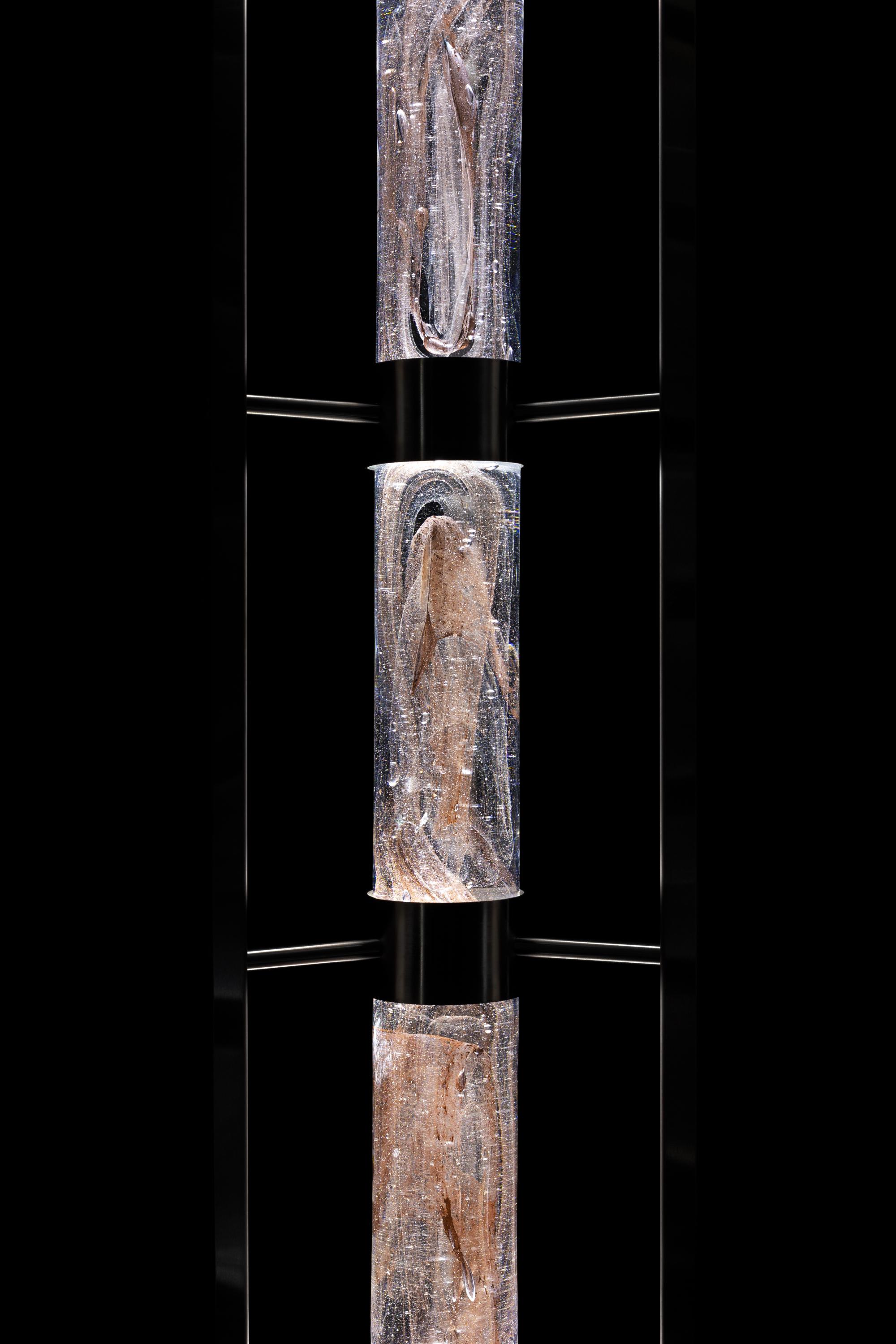
Talk at Imagining Earth, June 8 2023 - The Louisinana Museum of Modern Art, Denmark. Watch here.
Exhibition of five glass cores developed during the residency and the documentary film at "Evolutions" exhibition at Glasmuseet, Denmark from April 29 2023 - January 7 2024.
Exhibition of six glass cores developed during the residency at solo show 'Extremophilia' at Gether Contemporary Art Gallery, Denmark from 29 September - 11 November 2023
Talk at the Fine Art Teachers Union, Denmark, 12 April 2024.
Talk for students at the Textile School, Denmark, 18 April 2024.
Talk for design students at Brno Art Week, Czech Republic, 28 April 2024.
Screening of documentary film at the European Geosciences Union Conference (EGU24).
Screening of documentary film at EurOCEAN 2023.
'Sensing the Sea' exhibition in Xia Men, China, July 2024.
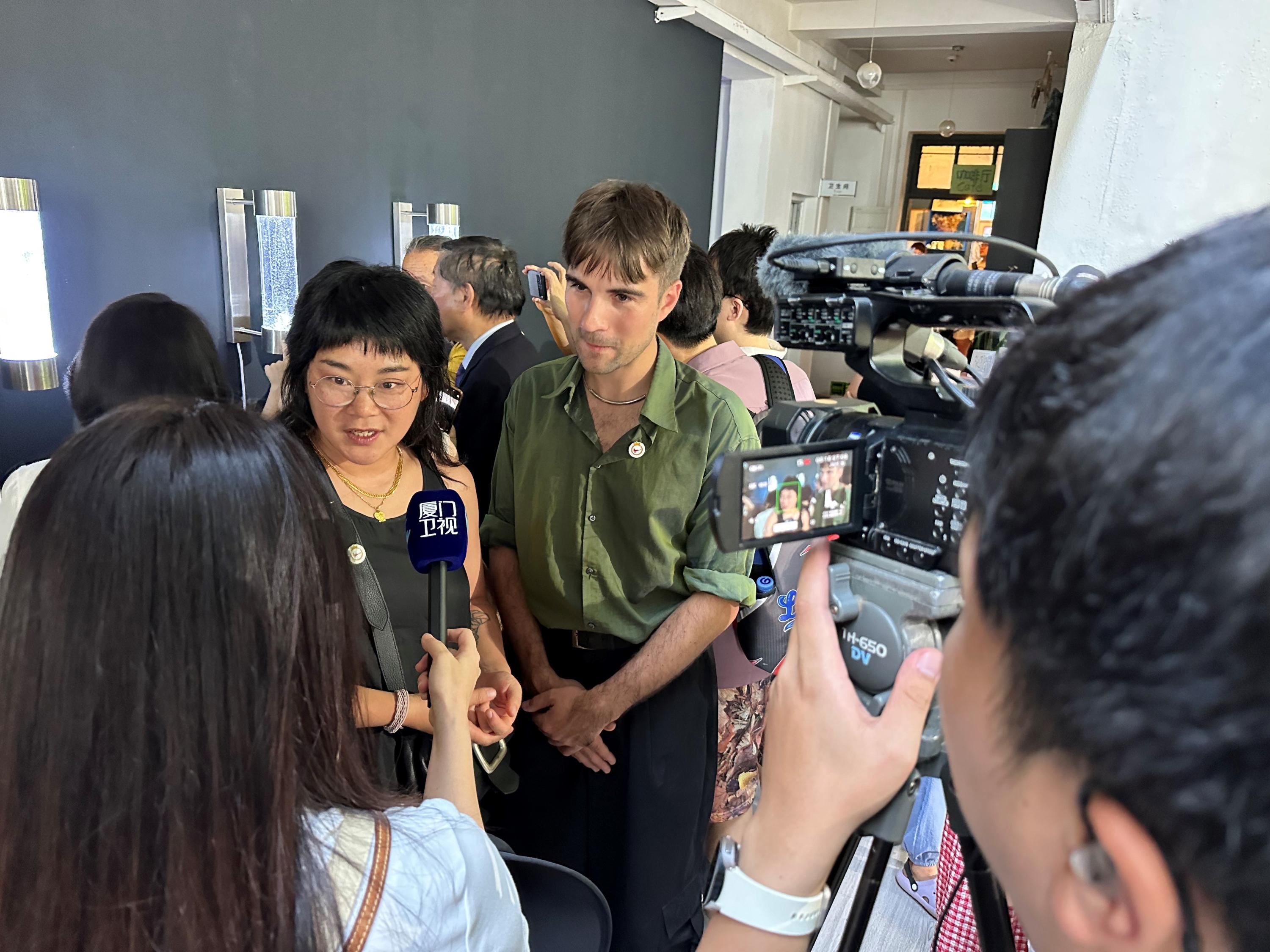
Media coverage
News article in Danish newspaper Jyllands-Posten, 3 Jul7 2023.
Coverage of 'Sensing the Sea' exhibition on three Chinese news channels.
Impact
The impact report for Deep Time can be downloaded here.
Action for Mission Restore our Ocean and Waters
This project is an action towards achieving the objectives of the European Commission's Mission Restore our Ocean and Waters, specifically contributing to the enabler “Public mobilisation and engagement”.